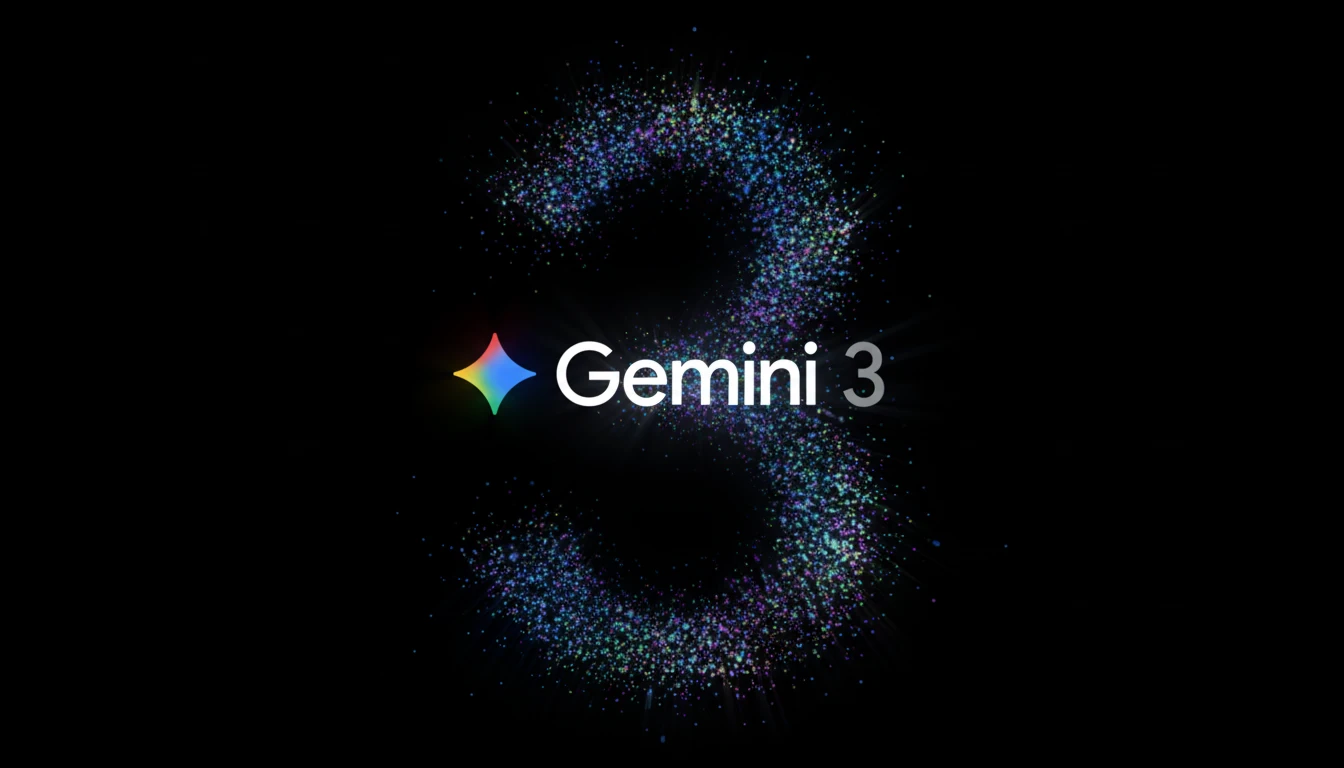
The world of artificial intelligence is moving at a breakneck pace, and for developers, engineers, and creators, this means our tools are getting smarter, faster, and more capable every few months. Just when we think we’ve hit a new peak, a model comes along that redefines what’s possible. Today, that model is Claude Sonnet 4.5, the latest powerhouse from Anthropic, and it’s poised to become an indispensable partner for anyone who writes code.
I’ve been working with large language models for a while now, and the evolution is genuinely astounding. I remember the sense of accomplishment when I was creating a Chrome extension using a previous Claude model; the process was impressive then, but the leap to what Sonnet 4.5 can do feels like a generational shift. This isn’t just another incremental update; it’s a specialized, highly intelligent tool designed to tackle some of the most complex challenges in software development and beyond.
This article is your comprehensive guide to understanding what makes Claude Sonnet 4.5 so special. We’ll dive deep into its core features, explore why it’s being hailed as the best model for coding, look at its performance benchmarks, and show you exactly how you can start using it today.
What is Claude Sonnet 4.5?
Claude Sonnet 4.5 is the newest and most advanced large language model (LLM) from Anthropic. It’s positioned as the top-tier model in their lineup, surpassing previous versions like Claude 4 Sonnet and Claude 3.7 Sonnet in key areas. Anthropic has specifically engineered it for superior performance in tasks requiring complex reasoning, especially in coding, agentic workflows, and intricate problem-solving.
At its core, Sonnet 4.5 is about providing intelligence that is not only powerful but also practical and reliable for high-stakes, real-world applications.
READ MORE: Claude 3.5 Sonnet vs GPT4o: Side-by-Side Tests
Beyond an Upgrade: The “Hybrid Reasoning” Engine
One of the standout features inherited and perfected in Sonnet 4.5 is its hybrid reasoning engine. This isn’t just a marketing buzzword. It refers to the model’s ability to combine different modes of thinking to solve a problem.
Think of it like this: a human expert doesn’t just rely on one skill. A master chess player uses pattern recognition (intuition) and a step-by-step calculation of moves (deliberate reasoning). Similarly, Sonnet 4.5’s hybrid engine allows it to:
- Instantly recognize patterns from its vast training data, much like an intuitive leap.
- Engage in deliberate, structured reasoning to plan, execute, and verify complex, multi-step tasks.
This dual-process approach makes it incredibly effective at understanding nuanced requests, planning out a sequence of actions, and self-correcting when it encounters an unexpected result—all crucial skills for writing and debugging code.
Key Features at a Glance
So, what makes Claude Sonnet 4.5 stand out? Here are the headline features that define its capabilities:
- Superior Intelligence for Agents: It’s designed to be the “brain” for autonomous AI agents that can perform tasks on your behalf, from browsing the web to using software tools.
- State-of-the-Art Coding Prowess: Anthropic explicitly calls it their best model for coding, with enhanced knowledge in specific domains like finance and cybersecurity.
- Massive 200K Context Window: It can process and recall information from approximately 150,000 words or over 500 pages of text in a single prompt. This is a game-changer for working with large codebases or extensive documentation.
- Enhanced Tool Orchestration: Sonnet 4.5 is significantly better at understanding and using external tools and APIs, making it a powerful engine for complex, integrated workflows.
- Improved Accuracy and Detail: The model demonstrates a higher level of accuracy and provides more detailed, nuanced responses, especially for long-running and complex tasks.
How it Compares to Previous Claude Models
To appreciate the jump to 4.5, it’s helpful to see the progression:
- Claude 3.7 Sonnet: This model first introduced the hybrid reasoning engine and was a major step up in coding and planning abilities. It set a new standard for Anthropic.
- Claude 4 Sonnet: This model built upon 3.7, offering improvements across the board and establishing itself as a practical, high-performance model for a wide range of use cases, including user-facing AI assistants.
- Claude Sonnet 4.5: This is the refinement and perfection of the hybrid reasoning concept. It takes the coding and agentic capabilities of its predecessors and elevates them to a new level, making it the specialized, “pro-grade” tool in the Claude family. The focus is less on general-purpose tasks and more on mastering the most complex, high-value workflows.
The Ultimate Co-Pilot: Why Sonnet 4.5 Excels at Coding
Anthropic’s claim that Claude Sonnet 4.5 is their “best model for coding” is a bold one, but it’s backed by specific architectural improvements that directly benefit developers. Let’s break down what this means in practice.
### Unpacking the “Best for Coding” Claim
This isn’t just about generating more lines of code faster. It’s about the quality, accuracy, and contextual awareness of that code. Sonnet 4.5’s enhanced domain knowledge means it’s not just familiar with Python or JavaScript syntax; it has a deeper understanding of common frameworks, libraries, and best practices within specialized fields like cybersecurity and finance.
This translates to code that is more robust, secure, and idiomatic. When you ask it to write a function for validating financial data, it’s more likely to account for edge cases specific to that domain.
Advanced Code Generation and Debugging
For developers, the daily grind often involves generating boilerplate code, writing unit tests, or hunting down elusive bugs. This is where Sonnet 4.5 shines.
- Code Generation: You can provide a high-level description of a function, class, or even an entire application architecture, and Sonnet 4.5 can generate a surprisingly complete and well-structured starting point. Its large context window allows it to understand the entire scope of your project, ensuring new code is consistent with existing patterns.
- Debugging: This is where the model feels truly magical. You can paste a block of buggy code along with the error message, and Sonnet 4.5 can often pinpoint the exact issue, explain why it’s happening, and provide a corrected version. Its reasoning capabilities allow it to trace the logic and identify flaws that might take a human developer hours to find.
Mastering Complex Tool Orchestration
Modern software development is rarely about writing code in a vacuum. It’s about integrating various APIs, services, and tools. Tool orchestration is a model’s ability to use these external tools effectively.
Claude Sonnet 4.5 has seen major upgrades in this area. Imagine you’re building a workflow that needs to:
- Pull user data from a Salesforce API.
- Process that data using a Python script.
- Generate a report using a data visualization library.
- Send a summary of the report to a Slack channel via another API.
Sonnet 4.5 can understand this entire multi-step process, generate the code to call each API correctly (including handling authentication and formatting data), and chain the steps together in the right order. This ability to act as a central “conductor” for a symphony of tools is what makes it so powerful for building complex agents and automations.
Context Editing: More Than Just Remembering
With its 200,000-token context window, Sonnet 4.5 can hold an entire codebase in its “memory.” But context editing goes a step further. It’s the ability to make precise, intelligent changes to that context.
Instead of just adding new code at the end, you can give it instructions like, “Refactor the userAuthentication function to use OAuth2 instead of basic auth, and update all the function calls throughout the project that depend on it.”
The model can read the entire codebase, identify the target function, rewrite it according to your instructions, and then find and update every instance where that function was called. This surgical precision saves an immense amount of time and reduces the risk of human error during large-scale refactoring.
Beyond the Code: Exploring Sonnet 4.5’s Versatile Use Cases
While coding is its headline feature, the advanced reasoning and massive context window of Claude Sonnet 4.5 unlock a wide range of powerful applications across different industries.
Building Sophisticated AI Agents
An AI agent is an autonomous system that can perform tasks to achieve a goal. Sonnet 4.5 is the ideal engine for these agents. For example, you could create a “research agent” that you task with, “Create a detailed report on the market trends for renewable energy in Southeast Asia, including key companies, recent investments, and regulatory changes.”
The agent, powered by Sonnet 4.5, could:
- Formulate a plan: Break the request down into smaller search queries.
- Use tools: Execute web searches, access financial databases via APIs.
- Analyze and synthesize: Read through dozens of articles and reports, extracting relevant information.
- Generate output: Compile all the findings into a well-structured, comprehensive report.
Cybersecurity: A Proactive Defense Partner
In cybersecurity, speed and accuracy are critical. Sonnet 4.5 can act as an invaluable assistant for security analysts. It can:
- Analyze Threat Logs: Sift through millions of lines of security logs to identify suspicious patterns or potential breaches.
- Code Vulnerability Scans: Review code for common security vulnerabilities like SQL injection or cross-site scripting (XSS) and suggest fixes.
- Incident Response: Help formulate incident response plans by quickly summarizing the nature of a threat and outlining recommended steps for mitigation.
Deep Dives into Financial Analysis
The financial world is built on vast amounts of data. Sonnet 4.5’s ability to process and reason over large documents makes it perfect for:
- Analyzing Financial Reports: Ingest a company’s entire 10-K annual report (which can be hundreds of pages long) and answer specific questions like, “What were the primary drivers of revenue growth in the last quarter?” or “Summarize the company’s risk factors related to supply chain issues.”
- Market Research: Synthesize information from news articles, analyst reports, and market data to provide a comprehensive overview of a stock or industry.
- Quantitative Modeling: Help quantitative analysts write and debug complex Python scripts for financial modeling and algorithmic trading strategies.
Streamlining Business Tasks and Research
For general business operations, Sonnet 4.5 can be a massive productivity booster. It can handle tasks like:
- Contract Analysis: Quickly review long legal contracts and highlight key clauses, obligations, or potential risks.
- Customer Support Automation: Power intelligent chatbots that can understand complex customer issues and access a knowledge base to provide accurate, detailed solutions.
- Strategic Planning: Analyze internal business data, market research, and competitor information to help draft strategic plans and business proposals.
READ MORE:https://uraiguide.com/claude-sonnet-3-5-use-cases
Claude Sonnet 4.5 Benchmarks and Performance
While real-world use is the ultimate test, performance benchmarks provide a standardized way to measure a model’s capabilities against its peers. Anthropic has released data showing that Claude Sonnet 4.5 sets new industry standards in several key areas.
### A Look at the Numbers
Here’s a summary of how Sonnet 4.5 performs on some of the most respected AI benchmarks:
- Code Generation (HumanEval+): This benchmark tests a model’s ability to write correct code from a description. Sonnet 4.5 achieves a top-tier score, demonstrating its proficiency in generating functional and accurate code.
- Graduate-Level Reasoning (GPQA): This benchmark contains challenging questions from graduate-level courses. Sonnet 4.5’s performance here highlights its advanced reasoning and deep knowledge base.
- Multilingual Math (MGSM): This test measures mathematical reasoning skills across multiple languages, where Sonnet 4.5 shows strong quantitative abilities.
- Tool Use (Tool-use Gauntlet): Anthropic’s internal benchmark for testing an agent’s ability to use tools. Sonnet 4.5 shows a significant improvement over previous models, confirming its strength in tool orchestration.
The Real-World Impact of Performance
What do these numbers mean for you?
- Higher Reliability: Better benchmark scores translate to more reliable and accurate outputs. You’ll spend less time correcting the model’s mistakes and more time building.
- Tackling Harder Problems: The improved reasoning capabilities mean you can trust the model with more complex and nuanced tasks that were previously out of reach for AI.
- Increased Efficiency: For developers, higher accuracy in code generation and debugging means faster development cycles and fewer bugs making it to production.
How to Access and Use Claude Sonnet 4.5
Getting your hands on this powerful new model is straightforward, as Anthropic is making it available through multiple channels to cater to different users.
### For Individual Users and Developers
The easiest way to experience the model is through Anthropic’s own products:
- Claude.ai: The model is available for users of the Claude Pro and Team plans. This web-based chat interface is perfect for direct interaction, brainstorming, and general-purpose tasks.
- Claude API: For developers who want to build applications on top of Sonnet 4.5, it is available via the Anthropic console . You can integrate its power directly into your own software, websites, and workflows. API access is typically priced per token (input and output).
For Enterprise and Cloud Users
Major cloud providers and developer platforms have been quick to integrate Claude Sonnet 4.5, making it accessible within existing enterprise ecosystems.
- Amazon Bedrock: Sonnet 4.5 is available on AWS’s fully managed service for generative AI. This allows businesses to easily build and scale AI applications using the model within their secure AWS environment.
- Google Cloud Vertex AI: The model is also accessible through Google Cloud’s AI Platform, providing another avenue for enterprise-grade access and integration.
For Coders: The GitHub Copilot Integration
This is one of the most exciting integrations for developers. Claude Sonnet 4.5 is rolling out as an optional model within GitHub Copilot. This means you can leverage its advanced coding capabilities directly inside your favorite editor.
- Availability: It’s available to users on Copilot Pro, Pro+, Business, and Enterprise plans.
- How to Use: You can select Sonnet 4.5 from the model picker in Copilot Chat within Visual Studio Code, on github.com, and in the GitHub Mobile app. It’s also available in the Copilot CLI.
This integration puts Sonnet 4.5’s powerful code generation, debugging, and context editing features right at your fingertips, seamlessly blending with your existing development workflow.
FAQ:
Is Claude Sonnet 4.5 free to use?
No, Claude Sonnet 4.5 is a premium model. It is available to subscribers of Claude Pro and Team plans on claude.ai. For developers, it is accessible via the paid Anthropic API, and for enterprise users, it is available through paid services like Amazon Bedrock, Google Cloud Vertex AI, and GitHub Copilot’s premium tiers.
How is Sonnet 4.5 different from OpenAI’s GPT-4o?
Both are state-of-the-art models, but they have different areas of emphasis. While GPT-4o is known for its incredible speed and multimodality (handling text, audio, and images), Claude Sonnet 4.5 has been specifically optimized for deep reasoning, handling extremely long contexts (200K tokens), and performing complex, multi-step agentic tasks, particularly in coding and enterprise workflows.
What does the “200K context window” actually mean for a developer?
It means you can provide the model with a huge amount of information in a single prompt. You could paste in multiple files from a large codebase, extensive API documentation, or a long and complex technical specification. The model will be able to read, understand, and use all of that information to answer your question or generate code, ensuring its output is highly relevant and consistent with your project.
Can Sonnet 4.5 help with legacy codebases, like COBOL or Fortran?
While Sonnet 4.5’s primary training is on modern programming languages, its advanced reasoning capabilities allow it to often make sense of less common or legacy code. It can help in understanding the logic, translating it to a more modern language, or identifying potential areas for refactoring. However, its performance will be strongest with widely used languages like Python, JavaScript, Java, C++, and SQL.
Is my data safe when using Claude Sonnet 4.5 through the API?
Anthropic has a strong commitment to data privacy and safety. According to their recent policy updates (effective October 8, 2025), there are important distinctions in how data is handled:
- API users: Your data is not used to train Anthropic’s models. API usage operates under separate terms with robust security protections.
- Consumer chat interface: Users now have the option to allow their chats and coding sessions to be used for training and improving Anthropic AI models. This is an opt-in feature that can be controlled through Privacy Settings at any time.
- Data retention: Anthropic is extending data retention to 3 years to help improve AI models and safety protections for consumer users.
If you’re using Claude Sonnet 4.5 through the API for business purposes, your data remains protected and is not used for training. For the most current and detailed information about data handling, security measures, and your specific use case, review Anthropic’s Privacy Policy and Consumer Terms, or visit their documentation at https://docs.claude.com.

